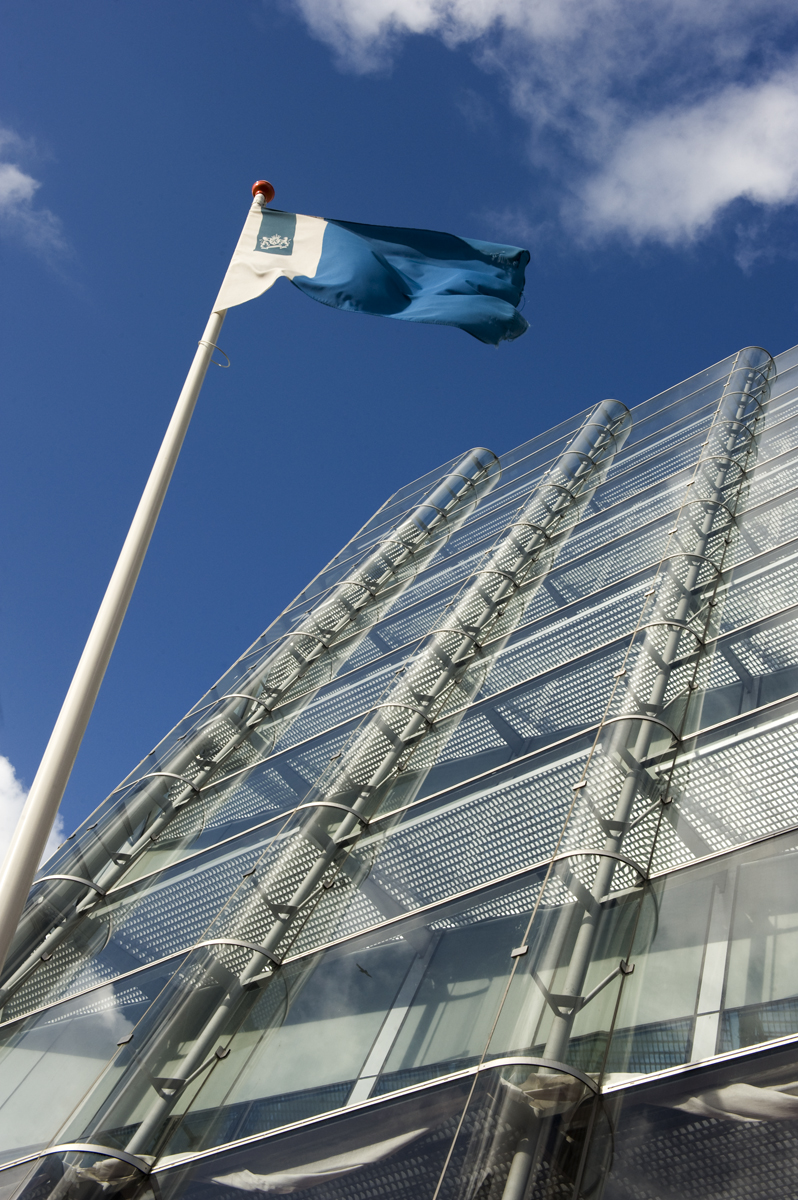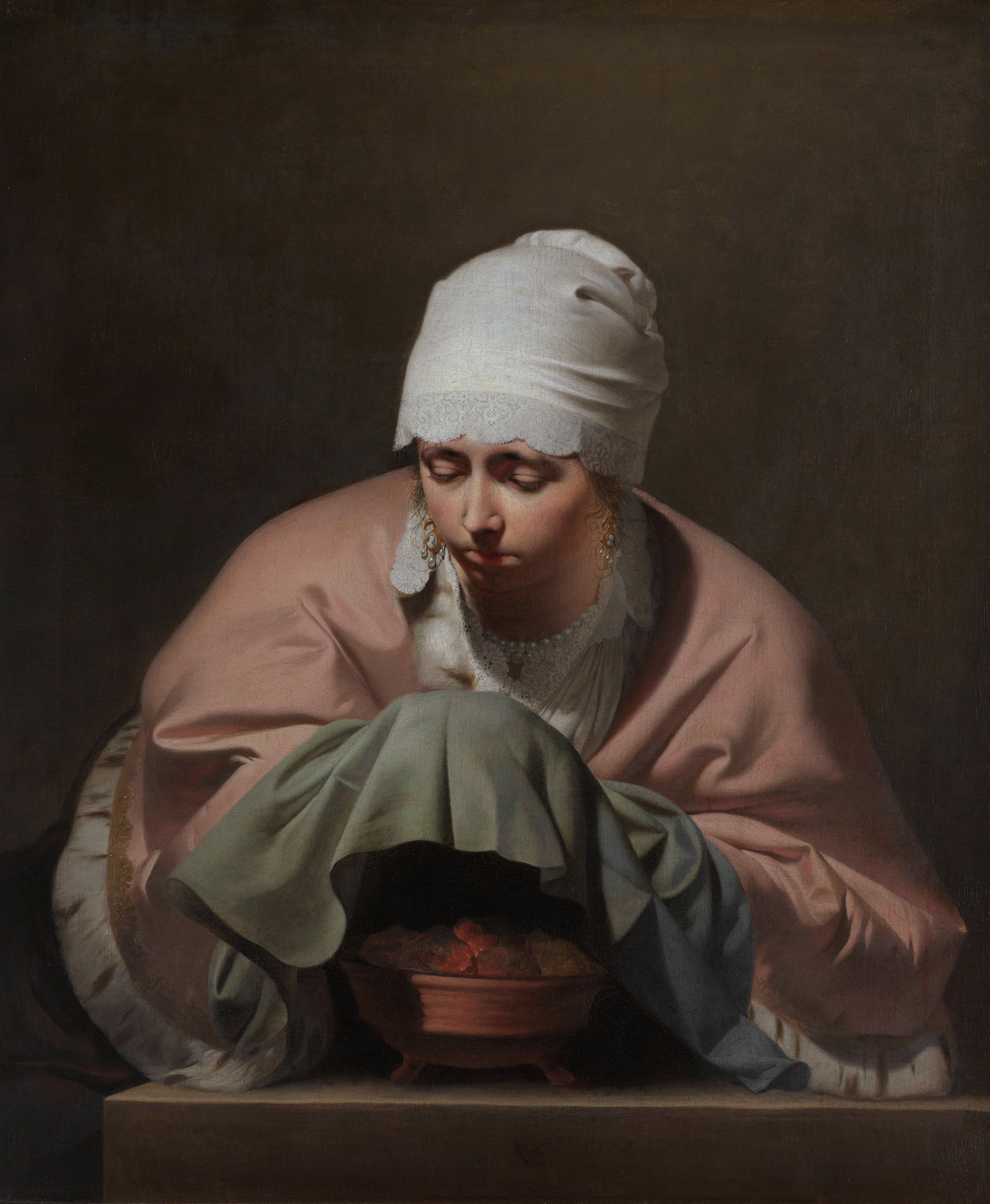|
Gemeenlandshuis Van Rijnland
The Gemeenlandshuis van Rijnland on the Breestraat in Leiden is the oldest Gemeenlandshuis of the Netherlands that kept its function until the current century. Currently, it is still in use by the Hoogheemraadschap van Rijnland, but only for meetings and special occasions. Their day-to-day seat of water management is housed today on the Archimedesweg in Leiden. History The first steps towards a formal method of dike management in Leiden were taken according to Ortelius in Brittenburg, making Leiden the oldest place in the Netherlands to conduct water management. The current building was built to house the Hoogheemraadschap that dates from the 12th century when the Oude Rijn river silted shut at Katwijk. In the centuries afterwards, a group of officials called ''heemraden'' oversaw the dikes along the IJ, the Zyl, the Does, and the dams at Zwammerdam and Spaarndam. Their privileges were described in a document that was given to the dike wardens at Spaarndam in 1255. This was th ... [...More Info...] [...Related Items...] OR: [Wikipedia] [Google] [Baidu] |
Gemeenlandshuis - Leiden
A Gemeenlandshuis, or Waterschapshuis is a building that is (or was formerly used as) the headquarters of one of the Waterboards of the Netherlands. History Early flood control in the Netherlands is often called the ''Teerschouw'', which loosely translated means "consumption during observation". of the word ''Teerschouw'' This technique was a periodic check of the local dike system by the Dike-reeve and his men. If they found a problem, they would simply go to the nearest house or inn, and stay there for free until the problem was fixed. This was a fairly direct and simple form of |
Spaarndam
Spaarndam is a small village in the province of North Holland, the Netherlands, on the Spaarne river and the IJ lake. The oldest part of the village, on the western side of the Spaarne, belongs to the municipality of Haarlem; the newer part on the eastern side is a part of the municipality of Haarlemmermeer. The village is built around a dam in the river, which is also the division line of the two municipalities. Spaarndam was created around a dam where the river Spaarne flows into the IJ. This dam was built here by count Floris V of Holland in 1285. The village collected tolls at this dam, and people made their living from fishing. From 1812 to 1927, the western part of Spaarndam was an independent municipality. The village has some tourism, and many people commute to Amsterdam and Haarlem. Spaarndam has always been strongly connected to water. Besides the river and the fishing, it is also famous because of a story within the 1865 American novel, ''Hans Brinker or th ... [...More Info...] [...Related Items...] OR: [Wikipedia] [Google] [Baidu] |
Ministry Of Transport, Public Works And Water Management
The Ministry of Transport, Public Works and Water Management (Dutch: ''Ministerie van Verkeer en Waterstaat''; V&W) was a Dutch ministry responsible for water management, public and private transport and infrastructure. It is now part of the Ministry of Infrastructure and Water Management. Responsibilities The motto of the ministry was: "familiar with water, progressive with connections". The ministry had two main responsibilities: * Regulation and management of transport of people and goods via roads, trains, boats and airplanes * Water management by water works, such as dikes, polders and channels Organisation The ministry was headed by one minister and one state secretary. The ministry's main office was located in the centre of The Hague. The civil service was headed by a secretary general and a deputy secretary general, who headed a system of four directorates general: * Passenger transport * Freight transport of goods and civil aviation * Water Affairs * Public Works an ... [...More Info...] [...Related Items...] OR: [Wikipedia] [Google] [Baidu] |
Pierre Cuypers
Petrus Josephus Hubertus "Pierre" Cuypers (16 May 1827 – 3 March 1921) was a Dutch architect. His name is most frequently associated with the Amsterdam Central Station (1881–1889) and the Rijksmuseum (1876–1885), both in Amsterdam. More representative for his oeuvre, however, are numerous churches, of which he designed more than 100. Moreover, he restored many monuments. Biography Cuypers was born in Roermond, the son of a church painter, and grew up in surroundings in which interest for art was encouraged. After he studied at the urban college in Roermond, he moved to Antwerp in 1844 to study architecture at the Royal art academy. He was taught by Frans-Andries Durlet, Frans Stoop and Ferdinand Berckmans, all pioneers of the neo-Gothic architecture in Belgium. Cuypers was a good student; in 1849, he gained the ''Prix d'Excellence'' of the academy. After a tour in the German Rhineland, he returned to Roermond, where he was appointed a town architect in 1851. I ... [...More Info...] [...Related Items...] OR: [Wikipedia] [Google] [Baidu] |
Rijksdienst Voor Het Cultureel Erfgoed
Rijksdienst voor het Cultureel Erfgoed (RCE, Cultural Heritage Agency of the Netherlands) often abbreviated as Cultureel Erfgoed, is a Dutch heritage organisation working for the protection and conservation of National Heritage Sites. It is located in Amersfoort, province of Utrecht. Responsibilities Cultureel Erfgoed is a department of the Dutch Ministry of Education, Culture and Science. Their responsibilities include managing the official list of Rijksmonumenten known as the ''Monumentenregister'', (the storage and restoration of) the National art collection of the Netherlands, the National Archaeological Ship storage and fleet, and ''Archis'', the central archaeological information system. They also subsidize grants in the fields of both movable and immovable cultural heritage. The RCE carries out the Dutch law known as the "Monumentenwet 1988" (English: ''Cultural property law''), and wherever registered cultural heritage is threatened, the department takes action, whether b ... [...More Info...] [...Related Items...] OR: [Wikipedia] [Google] [Baidu] |
Nicolaas Kruik
Nicolaas Samuelszoon Kruik ( la, Nicolaus Samuelis Cruquius; 2 December 1678, West-Vlieland – 5 February 1754, Spaarndam), also known as Klaas Kruik and Nicolaes Krukius, was a Dutch land surveyor, cartographer, astronomer and weatherman. He is commemorated by the Museum De Cruquius. He was a perfectionist who liked to measure things and he calculated temperature measurements in Fahrenheit from 1706 to 1734. His historical calculations are still used today by the KNMI, the Dutch meteorological institute. He not only measured weather changes in wind speed, rainfall, air pressure, temperature, and humidity, but also measured sea level. His method of visualising planes of water level to illustrate contours of depth (isobaths) in his map of the Merwede (1728) was the first of its kind. He was an advocate of pumping out the Haarlemmermeer (Haarlem lake), which was done a century after his death. Biography He became a surveyor at the age of 19 and began to draw maps, a lucrative j ... [...More Info...] [...Related Items...] OR: [Wikipedia] [Google] [Baidu] |
Zwanenburg
Zwanenburg () is a town in the Dutch province of North Holland. It is a part of the municipality of Haarlemmermeer, and lies about 11 km west of Amsterdam. Zwanenburg has a population of around 7,670.Statistics Netherlands (CBS), ''Gemeente Op Maat 2004: Haarlemmermeer' History Zwanenburg takes its name from Gemeenlandshuis Zwanenburg, the former headquarters of the Hoogheemraadschap Rijnland, a water board that used to have its headquarters in Halfweg, on the other side of the canal known today as the Ringvaart. Up until the 19th century, Zwanenburg was under water. When the pumping station at Halfweg had succeeded in making the land ripe for building, the workers who had settled at Halfweg purchased this cheap land below the dike for their homes. The infrastructure linking Halfweg to Haarlem and Amsterdam was already quite good, so Zwanenburg became a true commuter town. Halfweg was also the site of a large sugar factory, first opened in 1863, that served as an employer ... [...More Info...] [...Related Items...] OR: [Wikipedia] [Google] [Baidu] |
Pieter Post
Pieter Post in 1651. Portrait by Pieter Nolpe, detail of a larger work Pieter Jansz Post (1 May 1608 – buried 8 May 1669) was a Dutch Golden Age architect, painter and printmaker. Biography Post was baptised in Haarlem, the son of a stained-glass painter and the older brother of painter Frans Post. He is credited with the creation of the ''Dutch baroque'' style of architecture, along with his longtime collaborator Jacob van Campen. Together they designed the Mauritshuis in the Hague. According to Houbraken he was a famous architect who introduced his brother Frans to Maurice of Nassau, Prince of Orange while he was working on plans for the Mauritshuis.Pieter Post Biography in ''De groote schouburgh der Nederlantsche konstschilders en schilderessen'' (1718) by |
Halfweg
Halfweg () is a village in the Dutch province of North Holland. Previously a part of the municipality of Haarlemmerliede en Spaarnwoude, it is currently a part of the municipality of Haarlemmermeer and lies about east of Haarlem. Its name, which translates as "halfway," comes from its location approximately halfway between Haarlem and Amsterdam. History In 1632, the Haarlemmertrekvaart, a canal from Amsterdam to Haarlem, opened for passenger traffic by trekschuit (towed barges). At the halfway point the passengers needed to disembark and change boats. on Museum website A was laid along the canal, and this route has become the [...More Info...] [...Related Items...] OR: [Wikipedia] [Google] [Baidu] |
Haarlemmertrekvaart
The Haarlemmertrekvaart �haːrlɛmərˈtrɛkfaːrt(Haarlem's Tow-Canal) is a canal between Amsterdam and Haarlem in the province of North Holland, the Netherlands. It was dug in 1631, making it the oldest tow-canal in Holland. Travel on such canals was historically done by barges (or ''trekschuit'' in Dutch) which were towed by animals (and sometimes by man-power) on a path along the canal's edge (towpath). History Until the beginning of the 17th century, the primary waterway between Amsterdam and Haarlem was the IJ, a bay of the Zuiderzee. The land route was over the twisty dike along this bay. In 1631 construction began and the canal was dug in a virtually straight line to guarantee the shortest route. It shortened the waterway from Haarlem to Amsterdam considerably. Until that time, boats needed to travel up the Spaarne river to pass the narrow sluice gate at Spaarndam, to reach the IJ. Similarly, the towpath shortened the route considerably for land traffic. Prior to this ... [...More Info...] [...Related Items...] OR: [Wikipedia] [Google] [Baidu] |
Dijkgraaf (official)
A (), sometimes called a , is the chair of a Dutch water board. The dijkgraaf is the equivalent of a mayor in local government and a King's Commissioner in provincial government, chairing both the legislative and executive council, while having both ceremonial and representational roles as well as their own portfolios. The term goes back to pre-medieval days. Literally the term means "Dike count", like other titles ending in (equivalent to English: -grave and german: -graf) of feudal origin, but remained a functional official. The government bodies in the Netherlands today in order of rank are: #National #Provincial #Municipal #Water boards. In medieval times and earlier however, the water boards were the same as municipal, and since it was a country of duchies, the Water board () was in governmental terms the equivalent of a city (), and thus also the highest form of government. References Dijkgraafdefinition (Dutch) Water Canon(English version) website of The Ministry of ... [...More Info...] [...Related Items...] OR: [Wikipedia] [Google] [Baidu] |
Caesar Van Everdingen
Cesar Pietersz, or Cesar Boetius van Everdingen (1616/17 – buried 13 October 1678), older brother of Allart van Everdingen and Jan van Everdingen, was a Dutch Golden Age portrait and history painter. Biography He was born in Alkmaar and educated in Utrecht, where he learned to paint from Jan Gerritsz van Bronckhorst.Cesar van Everdingen Biography in ''De groote schouburgh der Nederlantsche konstschilders en schilderessen'' (1718) by , courtesy of the < ... [...More Info...] [...Related Items...] OR: [Wikipedia] [Google] [Baidu] |






